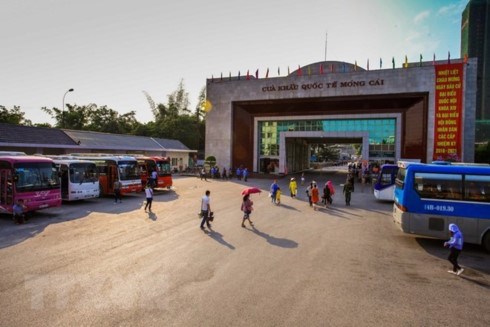According to Circular No 19/2018/TT-NHNN issued by the State Bank of Vietnam on August 28, which will take effect from October 12 this year, the Chinese yuan will be allowed for payment in the border areas between Vietnam and China.
Besides the yuan, traders and residents in the border areas of Vietnam and China, can also use Vietnamese dong or fully convertible currencies, such as the US dollar, Euro or Yen, for payment of goods and services.
    |
 |
|
At Mong Cai International Border Gate |
In addition to individuals, some other organizations will be subject to the new regulation. They include commercial banks and branches of foreign banks licensed to conduct foreign exchange transactions in Vietnam; branches of banks located in border areas and border-gate economic zones of Viet Nam and China; organizations trading in duty-free goods; organizations providing services in isolated areas at international border gates; organizations engaged in bonded warehouses in border regions; the Vietnam-China Border Gate Economic Zone; and other organizations and individuals conducting payment activities in Vietnam-China border trade.
Payment can be made through banks or in cash in dong or yuan, according to the circular.
Vietnam has seven provinces sharing the border with China, including Lang Son, Quang Ninh, Ha Giang, Lai Chau, Lao Cai, Cao Bang and Dien Bien. The Chinese yuan and Vietnamese dong are only used for payment in border areas of these provinces.
Economic and trade cooperation between China and Vietnam has become increasingly close in recent years, and there is huge demand and an increasing trend toward yuan settlement in Vietnam.
Vietnam has overtaken Malaysia to become the largest trade partner of China in the Association of Southeast Asian Nations (ASEAN). Their two-way trade was estimated at USD 66 billion in the first half of 2018, with the average monthly trade turnover between the two countries having exceeded USD 10 billion for the first time in history.
Source: VNA